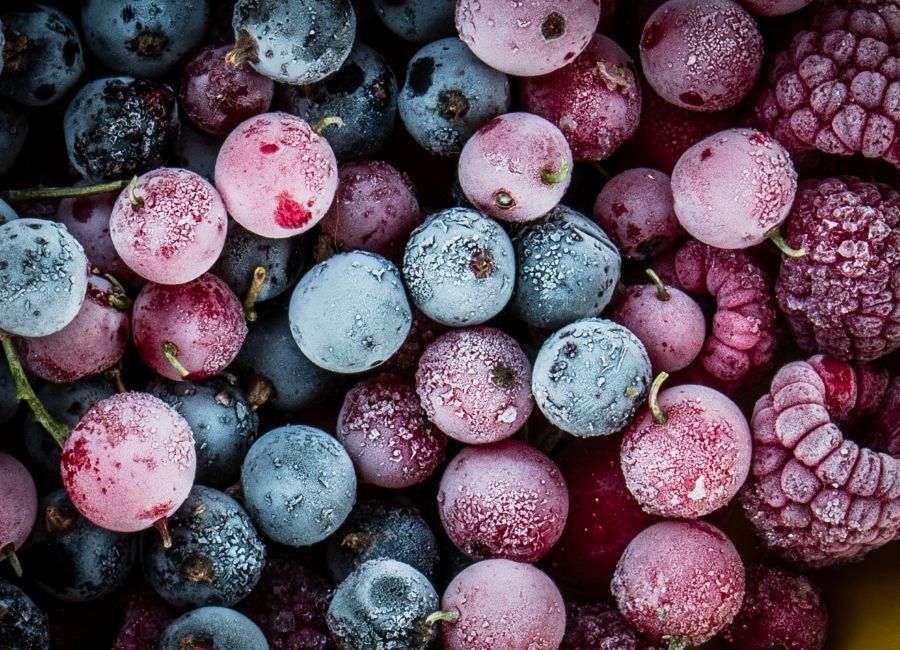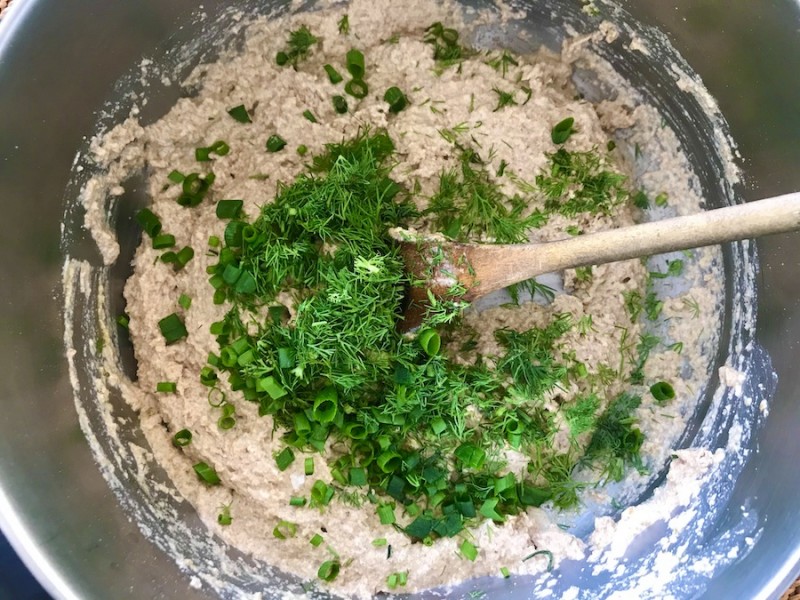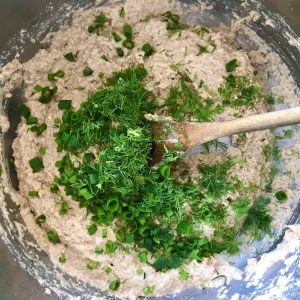Did you know that freezing fresh produce is not only possible but a great way to extend its life?
Since COVID-19 took over, it feels a little like life has stopped. It hasn’t. We need to keep going. I mean, just look at your produce. It hasn’t stopped. Fresh fruits and vegetables add brightness, flavor and nourishment to these uncertain days. But they have a limited lifespan.
If you were a wee bit overzealous with your coronavirus stock-up megashop, you might have more than you can get to in the next few days. Don’t let it sit on your counter or in your fridge, uneaten and unloved, inching past its luster. Preserve it now to enjoy later. Freeze it. Freezing is a food preserving method that gives us an edge over our cocina povera-practicing ancestors.

Freezing fresh produce isn’t difficult. Juicy fruits in particular — peaches, berries, and other spring fruits— freeze well. Berries may be left whole, but larger fruits, like peaches and mangoes, do best when sliced into bite-sized pieces before freezing. Compost stems, cores and any blemishes or bits that cause worry. This is not the time to fret over fruit imperfection.
Place on fruit slices on a tray or baking sheet, spreading the pieces, so they don’t touch each other. Pop it into the freezer and freeze for two hours, or until fruit freezes firm. Then you can scoop it all up and put it into an airtight container. Press out all the air to prevent freezer burn. Store the fruit in the freezer until you want it. Freezing the slices individually lets you use as little or as much as you like instead of chiseling what you need from one big frozen fruit clump.

Cruciferous vegetables like broccoli, cauliflower, and Brussels sprouts keep best when blanched before freezing. Blanching, giving vegetables a quick immersing in boiling salted water, halts the production of enzymes that contribute to loss of freshness, flavor and nutrients.
Bring a large pot of well-salted water to a rolling boil. Cut cauliflower and broccoli into florets or bite sized pieces. I like to add the chopped stems, too. I hate waste and I love broccoli. Cut large Brussels sprouts in half; small, cute ones can be left whole, Drop the vegetables into the boiling water. Blanche for two to three minutes, so the color remains bright.
Drain and rinse well in cold water to rid any clinging grains of salt. Blot dry and spread the cut vegetable bits on a tray or baking sheet and freeze until solid. Then store the florets or chopped bits in an airtight container until ready to use.
Hearty greens like collards, kale, and mustard greens work well using the same method.
Cut away the greens’ tough central stems and chop the leaves. Add the greens and give them a stir, so all the greens submerge. Boy, will they wilt down in size.
Drain greens again, let them cool and squeeze out extra water lurking among the leaves. Seal them in an airtight container and freeze until ready to use.
Growing your own herbs? Good on you. Herbal overage keeps well in the freezer. Just rinse the delicate sprigs, pat dry and seal in a small airtight container.
Almost any fresh fruit or vegetable can be frozen. Thawing is a different story. Some frozen vegetables can be watery once thawed. Herbs, greens, cauli and broccoli won’t let you down, though, and can happily be added to whole grains, beans, pastas and such with their flavor and texture largely intact. Frozen fruit usually goes a bit mushy once it’s thawed but will do beautifully in baking, sauces and smoothies.
The National Center for Food Preservation’s handy guide offers optimal blanching and freezing times, thawing tips and more. I want to be a resource, too. Email me with cooking questions, existential angst, whatever you got. In the meantime, you’re doing great. Breathe. Chill.
Those frozen greens would be most welcome in wild greens and barley.
Those frozen herbs come to life in this herb quick bread.


Herb Quick Bread
Ingredients
- 1-1/2 cups unsweetened soy milk oat milk or plant-based milk of your choice
- 1 tablespoon cider vinegar
- 2 cups whole wheat flour
- 1/2 cup toasted wheat germ
- 1 teaspoon baking powder
- 1 teaspoon baking soda
- 2 tablespoons fresh dill finely chopped
- 2 tablespoons fresh chive finally chopped
- 2 tablespoons olive oil
- 1 tablespoon agave or maple syrup
- generous pinch of sea salt
Instructions
- Preheat oven to 350 degrees. Lightly oil a 9X5” loaf pan.
- In a medium bowl, combine plant-based milk and cider vinegar. This creates a mildly tangy, slightly curdled plant-based version of buttermilk. Set aside.
- In a large bowl, add whole wheat flour, wheat germ, baking powder and baking soda. Whisk to combine and lighten.
- Pour the plant-based milk mixture into the flour mixture, stirring gently to combine. Add olive oil, agave or maple syrup and salt. Fold in chopped herbs. Pour batter into prepared pan. Sprinkle on another pop of sea salt if desired.
- Bake for 45 minutes, or until bread puffs, smells fragrant and forms a golden crust.
Check out the rest of our conscious cookery content:

Leave a Reply